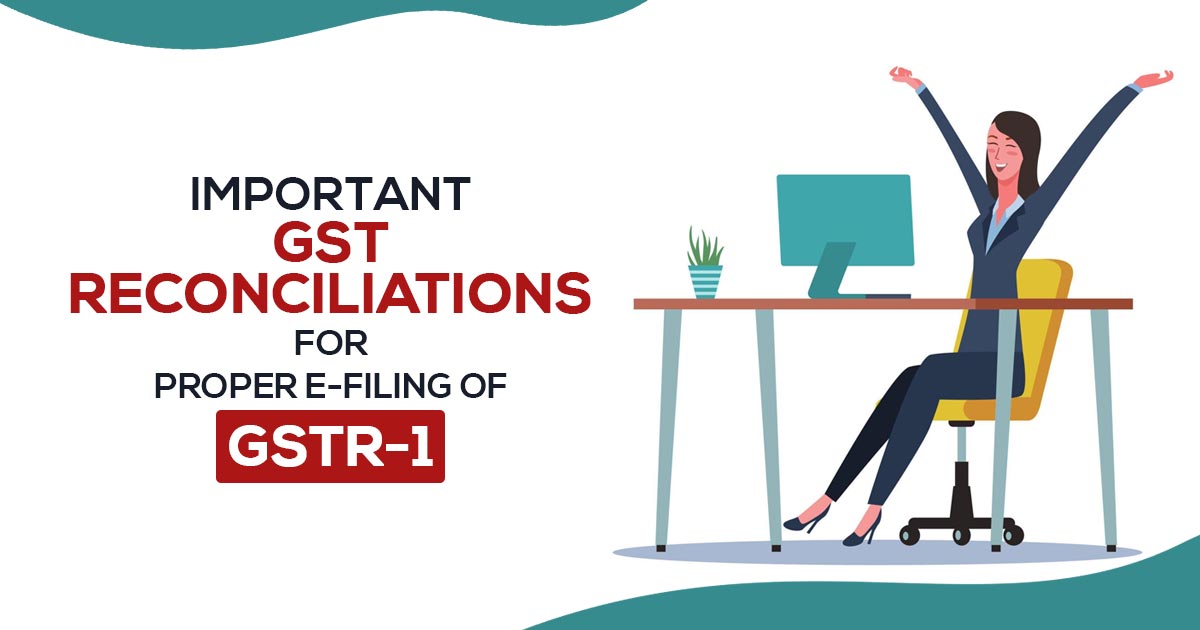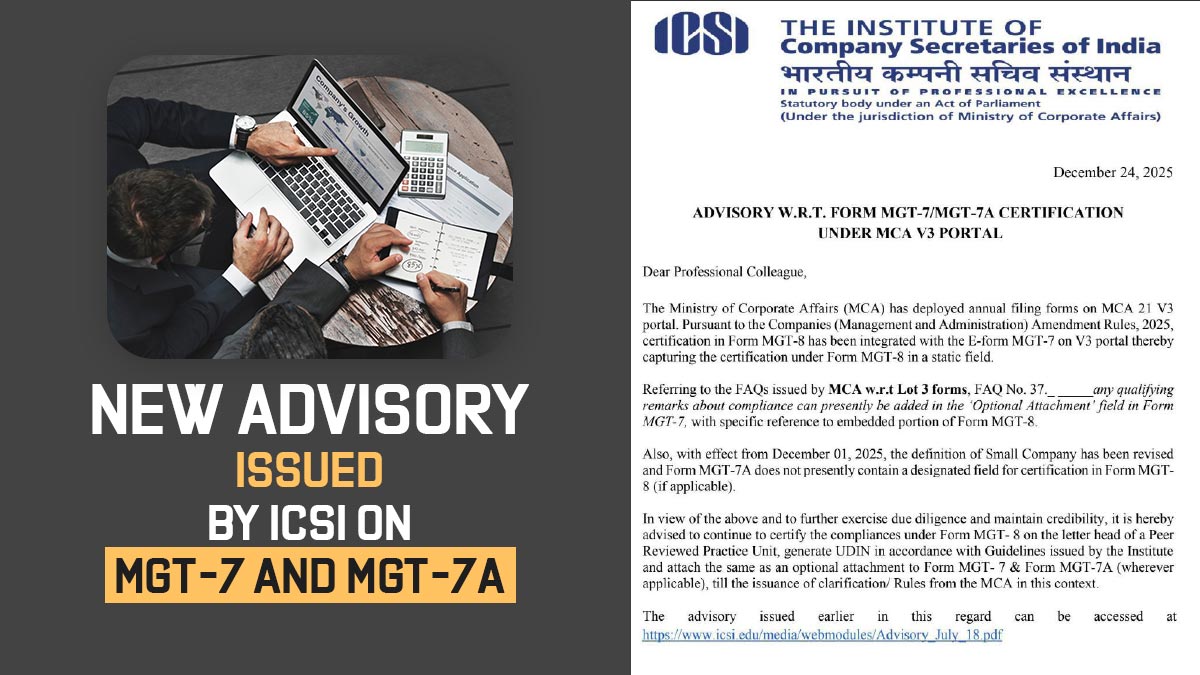
Since the launch of the goods and services tax (GST) law, the GSTR-1 filing has to go through some significant changes. It started with just reporting sales data but has since expanded to involve several reconciliations prior to reporting. If we talk about a few of these GST reconciliations before GSTR 1 e-Filing, they may require additional regulations that a company may have to abide by, including GST e-way bills and e-invoicing.
Short Intro of GSTR-1 Form
According to GST rules, regular taxpayers must submit the GSTR-1 form. For all sales or supplies made to customers or businesses outside the company, the format makes it mandatory for reporting them in papers.
Under this, domestic or international transactions, taxable or non-taxable, as well as modifications to previously reported documents like invoices, credit notes, and debit notes are included. Taxpayers can file GSTR-1 quarterly if their annual turnover is less than Rs. 5 crores. Taxpayers must submit this form monthly in the rest of the cases.
Main Reasons to Do These Reconciliations for Correct GSTR-1 Filing
The foregoing reconciliations are required for taxpayers for the reasons listed below:
- Include all documents from reporting in the applicable period.
- To prevent repeat reporting documents that were already reported during earlier periods.
- To detect sales that were recorded but no e-invoices were issued because they were time-barred, or because of the inability to submit to the IRP after the 7-day window that began to apply to taxpayers with annual turnovers of more than Rs 100 crore on May 1, 2023.
- To prevent differences during GST audits.
- For ensuring accurate reporting of the taxable amounts and tax values under the appropriate tax heads in GSTR-1.
List of Important Reconciliations for Valid GSTR-1 e-Filing
Your company may need to reconcile a few of the following:
- To trace unrecorded transactions or discrepancies in either of the records, perform a reconciliation between the general ledger and the sales register.
- To locate the transactions not stated in the sales register, undertake a sales register vs the GST E-way bill reconciliation.
- Reconcile the information to the IRP GST e-invoices after downloading the draft GSTR-1 from the GST Network.
- Compare the draft GSTR-1 on the GST portal with the B2C invoices and non-e-invoices from the sales register.
Businesses that frequently file GSTR-1 may miss important reconciliations for many reasons. Most of them prepare returns using standard techniques, such as spreadsheets and standalone applications, which are unaware of these reconciliations. If not, people who are aware of the reconciliations perform them manually, wasting time and exerting unnecessary effort.
It can help or hurt business compliance if each member of the team uses their own procedure for creating and submitting GSTR-1 on a monthly basis. If your team has a rulebook or set of rules that they must adhere to, make sure to include these reconciliations as required actions before reporting GSTR-1.
Difference Between Sales Register vs General Ledgers (GL)
This reconciliation is critical for mid-size and large-size businesses. And ERP systems of the taxpayer hold both these records. Every entity should compare the record showing in general ledgers (GL), such as the revenue and output tax ledgers, with the data in the sales register.
As part of data messaging, the team is expected to perform this reconciliation at the beginning. It is used to identify instances in which sales are not ERP-recorded, to accurately treat unbilled and non-GST revenue, net off or contra entries, as well as pure agent transactions, and to account for manual journal entries.
Additionally, negative statistics of GL amounts in the tax GL will correspond to positive statistics of tax values in the sales register, and vice versa. In order to compare two records equally, it must be done at the level of a summary or document, spanning multiple periods or just one, and at the Permanent Account Number Card or GSTIN level. It explains a patience limit to which errors between the two records can be ignored for ease of reconciliation.
Sales Register vs Draft GSTR-1 Form
Reconcile e-invoice data with the sales register periodically to detect differences between the e-invoices and the sales register. It avoids the user from having to delete the e-invoice record from the GST portal. Restoring an e-invoice on the government portal will remove the related Invoice Reference Number (IRN).
With the draft GSTR-1, perform a reconciliation of the Business to Consumer (B2C) transactions and all other non-e-invoice transactions in the sales register. It assists in identifying differences caused by manual errors by humans or by other data import-related technical issues.
Sales Register vs GST E-Way Bills (NIC Portal)
Except for a few excluded goods and transactions, all transactions require E-Way invoices. However, the NIC’s e-way bill portal only allows for the generation of these documents following the generating of an invoice for the applicable transaction.
Businesses could also fail to report some invoices for which e-way bills were generated, despite the fact that these invoices may have been underreported in GSTR-1. To send notices for discrepancies, the department performs reconciliations between e-way bills and invoices in the GSTR-1 return. This reconciliation can help you detect any missing e-way bills, set tolerance levels, and accurately account for cancellations with this reconciliation.
E-Invoices (Government E-Invoice Portal or IRP) vs. Draft GSTR-1 Form (GSTN Portal)
Most of the time, an e-invoice record automatically gets from the invoice registration portal (IRP) into the GSTR-1 in T+3 days, and sometimes it takes even longer.
Teams must also reconcile the sales register with the e-invoices on the IRP in a different type of reconciliation. As already mentioned, invoices and credit-debit notes must be recorded on IRP within 7 days of generating them, thus it’s necessary to make sure this reconciliation happens.
How Can You Do These GST Reconciliations Fast?
Adding it together, usually these reconciliations include data import, messaging it in the appropriate arrangement for comparison, and matching it to trace the exclusions and discrepancies. Most of these steps are unnecessary and even can be automated with AI’s help.
Cloud-based technologies can also be used. Therefore, businesses can make informed decisions for that on the basis of the size of the business operations and the volume of transactions.
SAG Infotech’s Gen GST online software gives the facility to reconcile the GSTN portal data with software data. This facility works before and after uploading GSTR-1 data on the portal.









